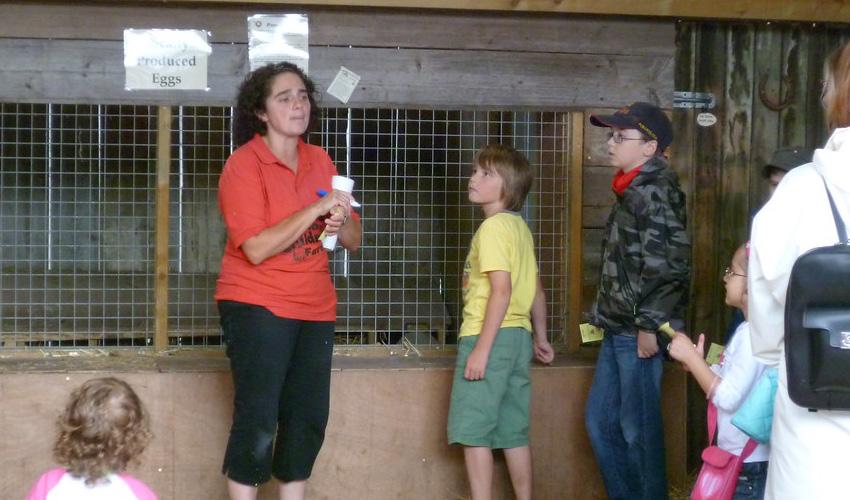
4 minute read
Backs & Bones
BACKS AND BONES
If you’ve ever suffered from a bad back you’ll know just how painful and restrictive it can be – and because other people cannot ‘see’ the pain it tends to get little sympathy. But bad backs are also one the greatest causes of sickness-related absence from work.
The good news though is that back pain is rarely serious and the best advice is to keep moving and stay active. If your job involves lifting heavy objects or sitting at a desk (and farming today usually involves both), checking your back makes good sense. Chronic back pain can result from bad posture, poor lifting technique or accidental injury.
Being overweight is also a major cause of back problems, not least because it can reduce activity and flexibility, but also because it also puts added strain on the muscles, ligaments and bones of the spine. Smoking can also significantly reduce bone strength – which is another good reason for quitting.
Adult bone is constantly being altered and renewed. This needs plenty of calcium. The body can only store this vital mineral in the bone itself, so fresh calcium is needed on a daily basis. The best sources are dairy products such as milk, cheese and yoghurt, but bread is also good as are fish (such as sardines) with edible bones and green leafy vegetables. You should include some of these foods in your meals as a matter of routine.
It’s not enough just to eat calcium. The body needs vitamin D to help take calcium in from the stomach. Sunlight converts an inactive form of vitamin D into the type which does this. You need a healthy balance between too much sun (which can cause skin cancer) and too little (which can cause bones to thin). Bones are not the only cause of pain. The back is supported by hundreds of different muscles including those that also support the arms, legs and head. All of them can be strained or overworked leaving the spine vulnerable to damage. Most back pain comes from injured muscle or tendons rather than the spine.
LOOKING AFTER YOUR BACK When standing for long periods > Head – keep it up and in line with your spine > Shoulders – relax and pull in your shoulder blades > Pelvis – keep your hips level while tucking-in your tailbone to line up with your spine > Knees – keep slightly bent (not locked) > Feet – share the weight evenly. When driving > Head – use a head restraint at all times > Lower back – adjust the seat (or use a small cushion) to give maximum support, and sit well back without slouching > Arms – slightly bent > Legs – adjust the seat for ease of reaching the pedals (while allowing maximum visibility) > Take a break – when stopped at the lights, relax by taking your hands off the wheel and bending your legs. > The HSE publish guidelines on driving a tractor safely. When lifting heavy objects > Keep your back straight and use your legs to take the strain > Know your limits. If it’s a two-man job then don’t be a one man bad back. It’s not always just weight but also the awkward shape or location of a load that can cause problems
> Make sure you can deal with the shape, clear the area and warn people before you attempt a lift. If equipment is being used by someone else, wait until it is free – machines are easier to repair than people.
OSTEOARTHRITIS Osteoarthritis occurs because joints have been continually stressed over the years. It can affect your knees, hips, fingers, and lower spine region. Farming for 10 or more years increases the risk of having osteoarthritis by nine times. If necessary knees and hips can be replaced with artificial ones. See your GP.
OSTEOPOROSIS Osteoporosis weakens bones over time. They become less dense and more likely to break. As it is not usually painful, osteoporosis is often only diagnosed when a bone breaks. It can cause long-term spine pain and stooping. Women are more at risk than men because of hormonal changes at the menopause when levels of oestrogen, essential for healthy bones, fall. You can help prevent osteoporosis by: > taking regular exercise to keep your bones as strong as possible > healthy eating – including foods rich in calcium and vitamin D > taking a daily supplement containing 10 micrograms of vitamin D > making lifestyle changes – such as giving up smoking and reducing your alcohol consumption If you are concerned about osteoporosis, visit your GP. You may be referred for a short, painless bone density scan.
FIBROMYALGIA Fibromyalgia is a long-term condition causing pain all over the body. It affects seven times as many women as men and usually develops between the ages of 30 and 50. Symptoms include increased sensitivity to pain, extreme tiredness, muscle stiffness, difficulty sleeping, problems with mental processes, headaches and irritable bowel syndrome. Although there is no cure, there are treatments available so see your GP if concerned.








